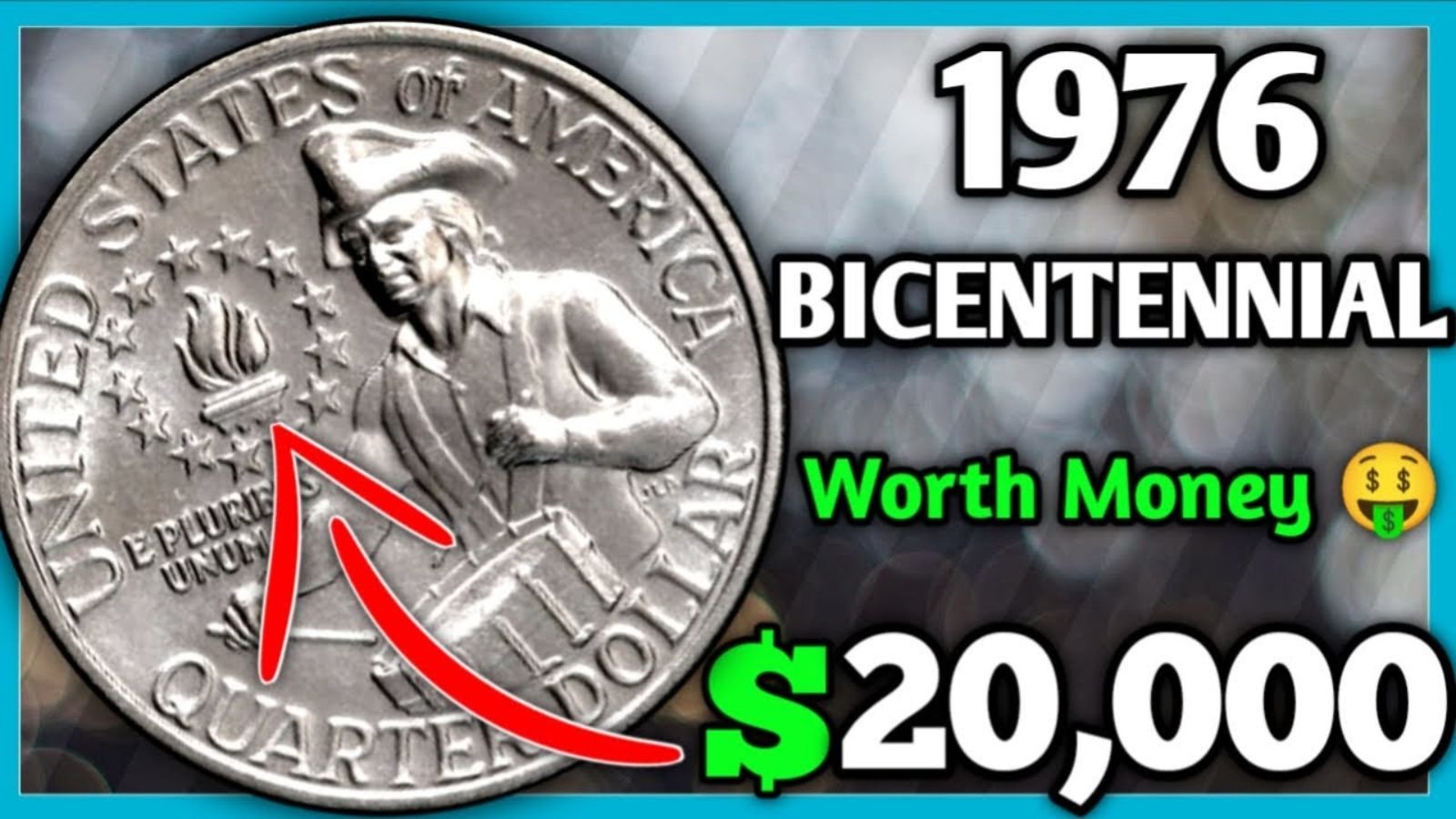Ever tossed a quarter onto the counter without a second thought? You might want to check again — because that seemingly ordinary Bicentennial Quarter Dollar could be worth far more than 25 cents. Some of these unique coins are now fetching hundreds or even thousands of dollars, depending on their condition, mint mark, and rare error features.
In this comprehensive guide, we dive into the history, design, value, and collectible appeal of the Bicentennial Quarter Dollar — and why you should never overlook this special piece of American coinage.
Bicentennial Quarter Dollar: A Symbol of American Pride
To celebrate the 200th anniversary of American independence, the U.S. Mint launched a one-time-only redesign of the quarter in 1976. Unlike standard quarters, the Bicentennial Quarter Dollar features the dual date “1776–1976” on the obverse (heads) and a brand-new reverse (tails) design showing a colonial drummer boy.
This commemorative issue was minted in 1975 and 1976 but all coins bear the 1776–1976 date. It was the first major redesign of the quarter since 1932 and remains one of the most iconic American coins in circulation.
Design Details of the Bicentennial Quarter Dollar
The obverse retains the familiar bust of George Washington, designed by John Flanagan. However, it swaps out the single year for a dual date (1776–1976) to commemorate the bicentennial celebration.
The reverse was designed by Jack L. Ahr and features:
- A colonial drummer boy in uniform, symbolizing the Revolutionary War.
- A torch encircled by 13 stars, representing the original colonies.
- The inscription “UNITED STATES OF AMERICA” and “QUARTER DOLLAR”.
This patriotic imagery makes the Bicentennial Quarter Dollar stand out from any other coin in your change jar.
How Many Bicentennial Quarter Dollars Were Minted?
In total, over 1.6 billion Bicentennial Quarters were struck between the Philadelphia, Denver, and San Francisco mints. Here’s a breakdown:
- Philadelphia (no mint mark): Over 809 million coins.
- Denver (D): Over 860 million coins.
- San Francisco (S): Produced both proof and 40% silver clad versions, totaling around 22 million coins.
With such high mintage, not every Bicentennial Quarter Dollar is rare. But certain versions — particularly errors, silver proof editions, and high-grade examples — are where real value lies.
Are Bicentennial Quarter Dollars Rare?
While the average circulated Bicentennial Quarter Dollar isn’t rare or highly valuable, specific types and conditions make a big difference. For example:
1. Silver Clad Bicentennial Quarters
The U.S. Mint released 40% silver Bicentennial Quarters in uncirculated and proof sets sold to collectors. These coins were not issued for general circulation.
- These silver coins weigh 5.75 grams, compared to the 5.67 grams of regular copper-nickel quarters.
- You can identify them by the “S” mint mark and unique tone or shine.
- A pristine silver Bicentennial Quarter Dollar can sell for $10–$25, or more in a certified high grade.
2. Proof Versions
Proof Bicentennial Quarters were specially minted for collectors, featuring mirror-like surfaces and sharp details. Some came in silver, others in clad. A proof Bicentennial Quarter Dollar can be worth $5 to $100+, depending on condition and certification.
Error Bicentennial Quarter Dollar: Where Value Skyrockets
The most valuable Bicentennial Quarter Dollars are those with minting errors. Collectors are always hunting for rare varieties such as:
• Double Die Obverse (DDO):
Doubling seen on the inscriptions “LIBERTY” or “IN GOD WE TRUST.” Value: $500–$3,000+.
• Off-Center Strike:
When the design is misaligned on the planchet. A 50% off-center strike can be worth over $1,000.
• Clipped Planchet:
Part of the coin appears missing due to improper cutting. These can sell for $100–$300.
• Wrong Planchet Error:
A quarter struck on a nickel or penny blank. These extremely rare coins may command $2,000 or more.
If you suspect your coin has an error, get it authenticated by a professional service like PCGS or NGC.
How Much Is a Bicentennial Quarter Dollar Worth Today?
Here’s a quick reference guide:
| Type | Estimated Value (2025) |
|---|---|
| Circulated Regular Issue | $0.25 – $1.50 |
| Uncirculated (MS65+) | $5 – $25 |
| Silver Clad Proof | $10 – $50 |
| Certified DDO Error | $500 – $3,000+ |
| Off-Center or Wrong Planchet | $250 – $2,500+ |
Keep in mind: coins graded MS65 or higher (Mint State) or with verified errors are in high demand.
How to Check if You Have a Valuable Bicentennial Quarter Dollar
- Look for Mint Marks:
- No mint mark = Philadelphia
- “D” = Denver
- “S” = San Francisco (proof/silver)
- Inspect the Weight:
- Silver clad quarters are slightly heavier (5.75g)
- Use Magnification:
- Spot doubling or unusual details on the design.
- Check Color and Shine:
- Proof and silver coins have a mirror finish.
- Get It Graded:
- Submit to PCGS or NGC for professional evaluation.
Collectibility and Historical Significance
The Bicentennial Quarter Dollar is more than a coin — it’s a piece of America’s 200-year celebration. Its unique design, massive circulation, and special silver issues make it an essential part of any U.S. coin collection.
Whether you’re a seasoned numismatist or just getting started, the Bicentennial Quarter Dollar is an accessible yet historically rich piece to hunt for.
Final Thoughts: Is the Bicentennial Quarter Dollar Worth Keeping?
Absolutely. Even if yours isn’t one of the ultra-rare error coins, the Bicentennial Quarter Dollar holds sentimental and historical value. If you happen to stumble upon one in pristine condition, or even better, a verified error, you could be sitting on a surprising windfall.
So next time you’re sorting through spare change, don’t overlook the drummer boy. The Bicentennial Quarter Dollar might be your gateway into the fascinating world of coin collecting — or the ticket to a few extra thousand dollars.
Some Important Link
| Telegram Group | Click Here |
| WhatsApp Group | Click Here |
| Home Page | Click Here |










